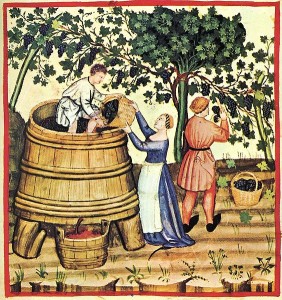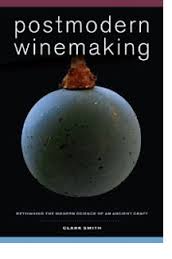To view a complete list of all the books I have reviewed on The Academic Wino, visit my Wine Book Library page and browse!
Today’s book review comes in the form of one of the more technical books I’ve read and reviewed on this blog. Postmodern Winemaking by Clark Smith is a smart, thought-provoking, at times technical, and at other times philosophical book which I highly recommend to anyone interested in winemaking; particularly those with a more technical understanding or those that are interested in the concept of postmodern winemaking and other philosophical musings related to wine. What is postmodern winemaking anyway, you ask? Well, Smith spends an entire chapter eloquently defining and describing the concept of postmodern winemaking, which I’d rather leave up to him to describe than to have me give you the short version.
To purchase Postmodern Winemaking by Clark Smith, head over to Amazon here. *affiliate link*
Postmodern Winemaking by Clark Smith is divided into 4 distinct parts: the first 11 chapters make up Part I, which spends time carefully defining and describing the concept of postmodern winemaking, as well as the basic principles behind postmodern winemaking and the stances the movement takes on several key concepts in winemaking. From describing the 7 functions of oak and how vineyard management is important in winemaking, to an interesting discussion on the concept of minerality and theories on Brettanomyces management, Part I is loaded with fascinating facts and insights that will definitely keep your brain churning throughout every turn of the page. As a side note, this is probably the most technical section of the book, but never fear, Smith attempts to write in a way that even the wine novice may understand, though at times you may need to give a paragraph an extra read or two in case you are perplexed the first time around (which, if you have little to no experience in winemaking or chemistry, you likely will be).
Part II of Postmodern Winemaking by Clark Smith delves into the actual practice of postmodern winemaking, and highlights several winemakers and how they are putting postmodern winemaking into practice for themselves. Chapter

Image in Public Domain. Source: http://commons.wikimedia.org/wiki/File:29-autunno,Taccuino_Sanitatis,_Casanatense_4182..jpg
12, “Winemaking’s Lunatic Heroes” gives an entertaining introduction and history to the postmodern winemaking movement, which is followed by 3 chapters highlighting specific winemakers currently practicing the trade. From Gideon Beinstock and Randall Grahm to Bob Wample, chapters 13-15 delve deeper into what these well-known winemakers are doing or have done in their quest to pursue a more postmodern winemaking approach to their craft.
Part III of Postmodern Winemaking brings back some more technical-in-nature prose regarding some of the newer technologies used and “approved” in postmodern winemaking. During the 4 chapters that make up this section, Smith tackles the areas of alcohol levels, pressing grapes, filtration techniques, and the “winemaking game changer”, Flash Détente. Smith offers some excellent analogies to those non-winemakers and non-chemists out there, giving even the novice an idea of what technologies are employed in postmodern winemaking (though again, it can get heavy at times).
Part IV of Postmodern Winemaking by Clark Smith is the final part in the book, and my favorite section of the book. This section drops all the technical lingo and talks philosophy of wine, specifically postmodern philosophy of wine. Smith makes some incredibly fascinating comparisons of wine to music, which I find very enlightening and thought-provoking. You certainly don’t need a science degree to understand Smiths’ views in this final section, and believe me, if you’ve made it through the technical stuff so far, you’ll be so thrilled to end on such a non-scientific tone.
This book would be fantastic for the winemaker or for those with a solid science background, however, it is written in such
a way that the novice should be able to follow along most of the way. Certainly, there will be some moments where you might think to yourself that you’re in over your head, but keep reading—Smith does a nice job describing some of the more technical jargon into sentences the Average Joe can understand, though I will be honest, it does help to have had a little experience or exposure to the sciences. Even if you’re only in it for the philosophical rhetoric of Part IV, it is completely worth it!
To purchase Postmodern Winemaking by Clark Smith, head over to Amazon here. *affiliate link*


